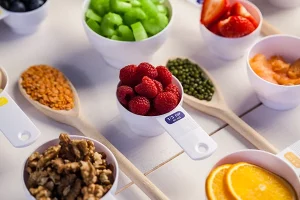As a restaurant owner or operator, you may have heard about menu labelling legislation and wonder whether it applies to your establishment. Menu labelling laws require certain restaurants to display calorie and nutritional information on their menus or menu boards. Furthermore, there are several options for obtaining the total calories of a recipe or dish, such as laboratory analysis or nutrition software.
Here are some things to consider when determining whether you must comply with menu labelling legislation.
- Jurisdiction: The first thing to consider is the jurisdiction in which your restaurant operates. Menu labelling laws vary by country, state, and local government. For example, in the United States, the Food and Drug Administration (FDA) has issued menu labelling regulations for chain restaurants and similar retail food establishments with 20 or more locations. However, state and local governments may have their own menu labelling requirements for restaurants that do not meet the federal criteria.
- Type of Restaurant: The second consideration is the type of restaurant you operate. Labelling laws typically apply to restaurants that serve standardized menu items, such as fast-food chains or franchise restaurants. If your restaurant offers unique or custom items, you may not be required to comply with menu labelling legislation.
- Menu Item Requirements: The third consideration is whether the items you offer meet the criteria for menu labelling. In the United States, the FDA requires restaurants to provide calorie and nutritional information for items that are listed on the menu and are sold for immediate consumption. This means items sold for takeout or delivery may not be subject to menu labelling requirements.
- Penalties for Non-Compliance: The final consideration is the penalties for non-compliance with menu labelling legislation. Failure to comply with menu labelling laws can result in fines and legal action, which can be costly for your business.
Read more: Operating in a Post-COVID World with Jo-Ann McArthur of Nourish Marketing

Methods of Menu Nutrition Analysis
Nutrition analysis is required to get the number of calories for each menu item. There are several different methods of nutrition analysis, each with its own advantages and limitations. Here are some of the most common methods:
Laboratory Analysis: This method involves sending a food sample to a laboratory for testing. The laboratory analyzes the sample using specialized equipment and techniques to determine the nutritional content. While laboratory analysis is highly accurate, it is also the most expensive and time-consuming method of nutrition analysis.
Database Analysis: Database analysis involves using a nutrition database, such as the USDA National Nutrient Database, to determine the nutritional content of a food. The database contains information on the nutrient content of thousands of foods and can be accessed online. This method is quicker and less expensive than laboratory analysis and can be done using a nutrition software.
Recipe Analysis: Recipe analysis involves adding up the nutrient content of all the ingredients in a recipe to determine the nutritional content of the dish. This method is less accurate than laboratory analysis, but it is also less expensive and quicker. Recipe analysis can be done manually or using nutrition software.
Direct Calculation: Direct calculation involves analyzing the nutritional content of a food based on its chemical composition. This method is most commonly used for processed foods, where the nutrient content can be calculated based on the amounts of different ingredients used. Direct calculation is less accurate than laboratory analysis, but it is also less expensive and quicker.
Read more: A Conversation with Chef Luciano Schipano

In conclusion, whether or not you need to comply with menu labelling legislation depends on several factors, including the jurisdiction, type of restaurant, and item requirements. It is important to research the requirements in your area and determine whether compliance is necessary for your business. By complying with menu labelling legislation, you can provide your customers with valuable nutritional information and avoid potential legal and financial penalties. There are several methods of nutrition analysis, each with its own advantages and limitations. The choice of method depends on the purpose of the analysis, the accuracy required, and the available resources. Regardless of the method used, nutrition analysis is an important tool for ensuring that food products meet the nutritional requirements of consumers.
MenuSano is the best way to stay compliant with menu labelling laws by doing database analysis. Start a Free Trial Today!



















